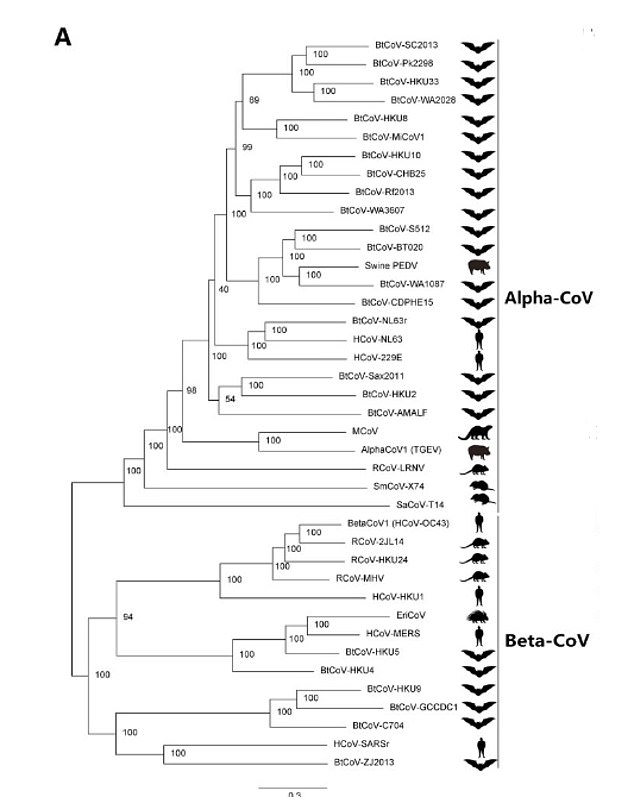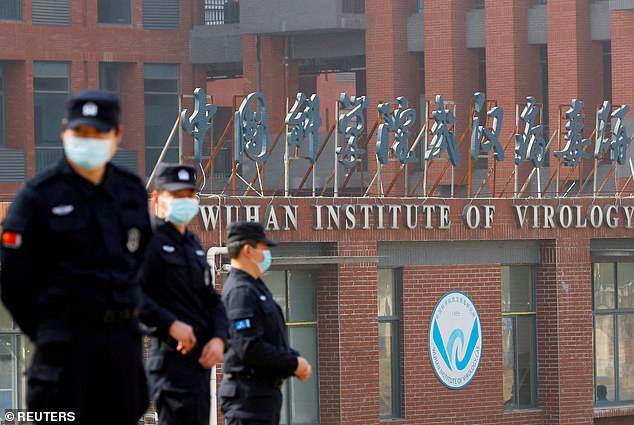Wuhan scientist dubbed ‘batwoman’ whose work is feared to have started Covid pandemic warns a different coronavirus outbreak in future is ‘almost certain’
Wuhan’s own ‘batwoman’ has warned that a new outbreak caused by another coronavirus is ‘almost certain’.
Dr. Shi Zheng-Li, a virologist at the infamous Wuhan Institute of Virology (WIV) in China, and other scientists warned in a recent article that the world must be prepared for a new outbreak.
They said that because coronaviruses – such as Covid-19 – had “caused disease before, there is a good chance that this will lead to outbreaks in the future.”
Dr. Zheng-Li earned her nickname because of her position as one of the leading experts on coronaviruses in bats, with her work often taking her into caves to find the most dangerous virus strains before being taken back to Wuhan for research.
There are fears her work may be linked to the Covid pandemic as there are concerns the virus escaped from her laboratory, known as the ‘lab leak’ hypothesis. Chinese officials dispute this, saying the virus emerged naturally after passing from animals to humans.
Shi Zhengli – dubbed the ‘Bat Lady’ to ‘Bat Woman’ for her work on bat coronaviruses – explored the possibility that Covid could have emerged from her laboratory in 2020, according to colleagues. Here she is seen working with other researchers at the Wuhan Institute of Virology in 2017

The chart above shows the 40 coronavirus species included in the study. As many as 27 of them – 68 percent – were in bats, the researchers said
The paper was made by a team from the WIV. Dr. Zheng-Li is listed as one of the main authors.
In the study published in July, the scientists wrote: ‘It is almost certain that diseases will emerge in the future and it is very likely that it will again be a CoV (coronavirus) disease.
“It is undeniable that if a CoV strain has previously caused the emergence of disease, it is likely to cause an outbreak in the future.”
Coronaviruses are a large family of viruses that live in a variety of animals, including bats, pigs and pangolins.
They can also spread to humans, leading to outbreaks including the 2003 SARS outbreak, which killed thousands of people, and the 2019 Covid pandemic, which caused more than a million deaths in the US alone.
Scientists fear that a new coronavirus could spread to humans in the future, creating a risk of a new major outbreak.
The WIV-led study reviewed the literature on 40 known coronavirus species and conducted laboratory tests on some of them.
The article was submitted for publication in March this year, but was not released until July.
In part of the research, they produced proteins from the wall of the nucleus of sixteen coronaviruses – the nucleus is the center of the cell that contains genetic information – for testing.
Twenty-seven of the coronaviruses studied – or 68 percent – came from bats, while another four occurred in rats, two in pigs and mice and one in mink and porcupines.
Six coronaviruses that already occur in humans were also included, including the SARS and MERS viruses.
Overall, the review labeled 20 of the viruses as being at ‘high risk’ of transmission to humans, potentially causing another outbreak.
It also said coronaviruses already in humans pose a risk as a “causing agent” of a future outbreak, likely because they can exchange genes with the invading coronaviruses, increasing their ability to infect people.
They also raised concerns about coronaviruses infecting animals other than their hosts, saying this posed a risk of them jumping to humans.
The research was published in the journal Emerging microbes and infections in July and led by Dr. Xiao-Shuang Zheng of the WIV.
It credits Dr. Peter Burbelo, a virologist at the National Institutes of Health (NIH), for helping with the work.
According to the study, it was funded by subsidies from the Chinese government.
Many have expressed concern that Covid escaped from the WIV in what has been called the ‘lab leak’ theory.
Once dismissed as a conspiracy, it is now considered the most likely scenario by the FBI and other government agencies.

Some experts now say Covid may have originated within the Wuhan Institute of Virology. Security personnel are pictured here standing guard during a WHO visit in 2021

Other theories about the origins of Covid point to the Huanan Seafood Wholesale Market in Wuhan as the epicenter of the outbreak. Many of the first cases in December 2019 and January 2020 had visited the location where live animals were sold
But the Chinese Communist Party has always rejected this theory, insisting that Covid was a “natural” event caused by the virus passing to humans in a location such as the wet market in Wuhan.
It has repeatedly denied the “laboratory leak” hypothesis and labeled it a smear campaign by “anti-China” forces.
No concrete evidence has ever been found to support either argument, leading experts to fear that the truth behind Covid’s origins will never be discovered.
This is especially worrying as they want to discover how the pandemic came about to prevent another pandemic from happening.
It comes after it was revealed in June that even Dr Zheng-Li feared Covid had escaped from her own laboratory.
Professor Wang Linfa, described by the BBC as a friend of hers, said the respected scientist spent “sleepless nights” sifting through frozen virus samples at the WIV, fearing “what might happen” if she found a virus in her laboratory would find an exact match for Covid.
